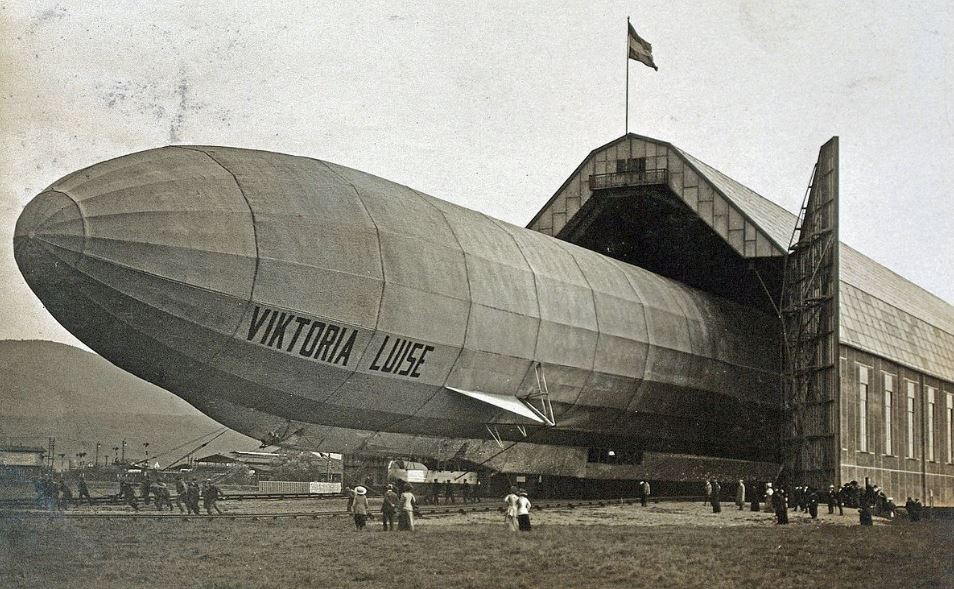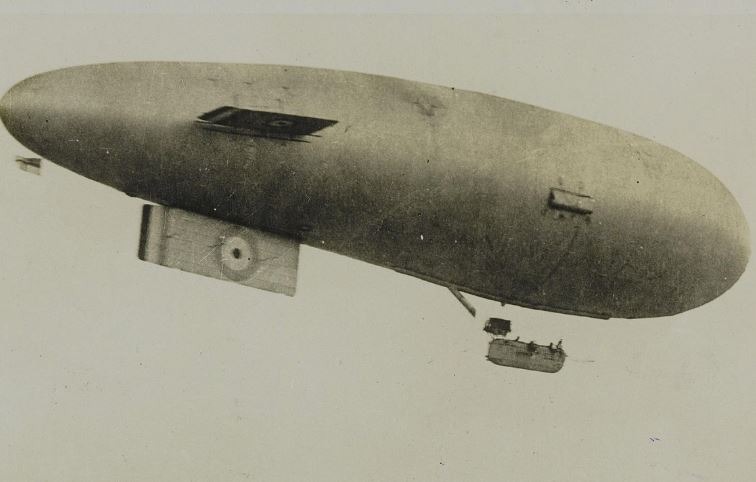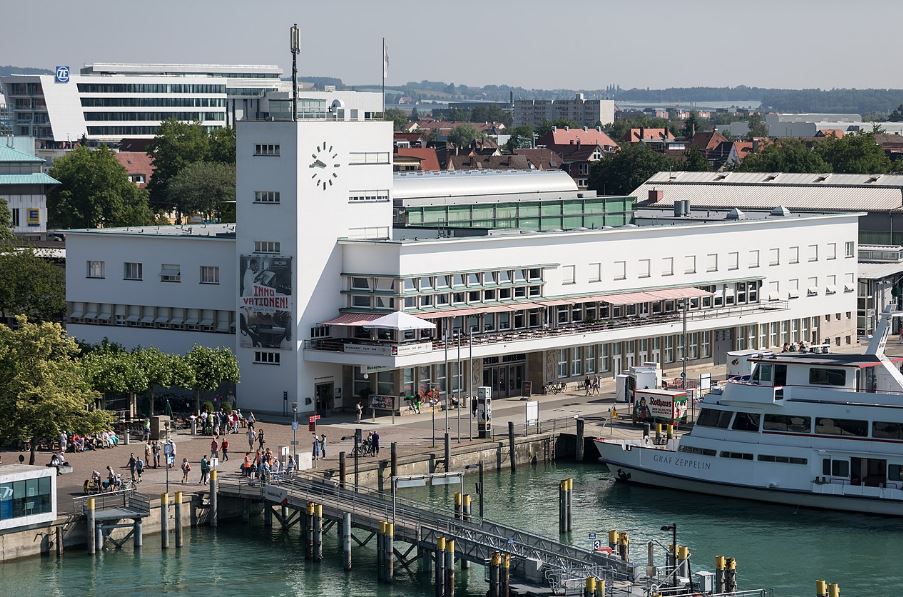Zeppelins were substantial, metal-framed, long-distance airships. Even before the war, they represented German national pride. In 1900, Graf Ferdinand von Zeppelin (1838–1917) successfully launched his first airship.
By flying above enemy lines well above gunnery range, they were used fairly immediately after the conflict began to gather intelligence. Zeppelins were dispatched to bomb British cities as it became evident that the conflict would be protracted and dragged out. They traveled from their bases on the northwestern German coast across the North Sea.
Zeppelins were employed for surveillance as well. Submarines were practically undetectable to ships but rather visible from the air, thus both sides employed them to locate them. And since they could transport radios that could transmit information to commanders on the ground, airships were incredibly helpful for fleet maneuvers.
Zeppelins announced the prospect of strategic bombardment. Germany was the first to exploit airships as a strategic weapon, despite the fact that they were first used for military and marine reconnaissance. By integrating Zeppelins into their combined weapons campaign, the German navy added total war against people to unrestricted submarine warfare by destroying London.
Introduction
Zeppelins demonstrated the strategic potential of air power by introducing strategic bombardment that was planned out and by eliminating physical barriers like the English Channel. Germany, France, Britain, Italy, and Russia all purchased airships for reconnaissance when the war started. The majority were pressure airships, which contained the gas inside the hull envelope. Zeppelins were substantial, metal-framed, long-distance airships. Even before the war, they represented German national pride. In 1900, Graf Ferdinand von Zeppelin (1838–1917) successfully launched his first airship. Although initially the Imperial German Navy saw Zeppelins as scouts for the fleet and the German army used them for reconnaissance, Germany was the first to use them as a strategic weapon. Airships were effectively utilized by the Royal Naval Air Service for anti-submarine reconnaissance and maritime surveillance. All kinds of airships were susceptible to bad weather.
Early Use and Description
Early attempts to deploy airships as tactical weapons failed because they were unreliable and vulnerable to ground artillery and small arms fire, which resulted in some losses. In August 1914, a German army Zeppelin attacked Liège, Belgium, murdering and injuring civilians without regard for who they were. However, the airship fell as a result of battle damage. Zeppelins had a vast range that allowed them to fly across the English Channel and into hostile territory. The targets of later strikes were consequently France and Britain.
A typical German Zeppelin measured more than 150 meters in length, 18.5 meters in diameter, and had 19 separate bags containing about 28,300 cubic meters of hydrogen gas. They cruised at about 65 kph with a top speed of almost 100 kph and were propelled by three, four, or six motors depending on the class. Although later models were able to go approximately 6,000 meters, its original service ceiling was around 3,500 meters. Nineteen to twenty-one aviators made up their crew. There were seven to eight machine guns and about 1,800 kg of high explosive and incendiary bombs in the arsenal.
German Army and Navy Doctrine
The navy considered strategic aerial bombing as a component of a larger combined arms strategy to support submarine warfare, whilst the army wanted to target Britain in a “frightfulness” campaign, or Schrecklichkeit, to cow civilian populations. Strategic bombing engaged the enemy directly and derailed the war effort, while submarines intercepted maritime supplies and retaliated against the Royal Navy’s blockade. The navy considered this to be a more acceptable form of warfare than starving the defenseless German women and children who were the indiscriminate targets of the British blockade, despite the fact that civilian factories and cities were bombed. The essence of warfare was irrevocably altered by this conflict, which introduced total war concepts into the 20th century.
The first navy strikes on Britain happened on the night of 19-20 January 1915, when two German navy Zeppelins bombarded Yarmouth and King’s Lynn. Both airships returned to base safely, having killed four and injured sixteen passengers. Although the attacks were somewhat disruptive, there were no significant fires started by the incendiary bombs. The explosives occasionally did not ignite due to the primitive technology, but when they did, they burnt ferociously. Aiming was crude and high explosive bombs regularly missed their objectives. Successful bombing missions were challenging to complete, even on good days.
London: The Center of the German Navy’s Strategic Air Campaign
Ultimately, the German naval strategy focused on a bombing campaign against London. A military airship called LZ 38 launched the first successful Zeppelin attack on London in May 1915. Naval airships then started their assault. The Thames docks in the East End were a frequent and noticeable target. Attacks by zeppelins were unabated. Even though the Zeppelins were slow-moving, Britain’s initial defenses against them were insufficient. Zeppelins were somewhat devastating despite having low bombing accuracy and having a tough time locating and fixing position. In war factories, their attacks led to fear and a halt in production. The Germans used zeppelins as efficient reconnaissance platforms to let them take pictures of significant targets in their adversary’s country. German airships observed the enemy from over Britain’s midlands while there was no equivalent British capability to counter Germany.
Zeppelins set multiple London fires on September 8, 1915, causing an estimated £500,000 in property damage. They conducted twenty-one raids by January 1916, dropping 1,900 bombs weighing more than 32,000 lb, resulting in 277 deaths and 645 injuries. These attacks resulted in an estimated £870,000 in damage. Zeppelin strikes claimed 1,915 lives by 1918, with 557 persons dead and 1,358 injured. Up until 6 June 1916, when the British created a crude air defense system that served as the model for the system utilized in World War II and included twelve air defense squadrons dispersed over thirty aerodromes throughout Britain, they were essentially unstoppable.
British Air Defense
Based on sound detection and ranging, the British developed a trustworthy warning system. They installed searchlights, anti-aircraft guns, and observer rings in belts surrounding the city. They developed better night-fighting pursuit aircraft with luminous instruments, an upward-canted Lewis gun, and effective incendiary and explosive bullets that could ignite the hydrogen gas and bring the Zeppelins down in flames. They also produced more night-fighting pilots, anti-aircraft guns, and shells. Around London, there were 12 pursuit units with 110 aircraft devoted to air defense.
Despite the fact that British aircraft were finally able to shoot down German Zeppelins, some German airmen believed that additional strikes on the British government could cause it to fall. Peter Strasser (1876–1918), a well-known airship commander in the navy, pushed for the development of the new “V” class Zeppelin, which could soar to heights of 4,800–6,000 meters. There were changes to the British and French leadership in 1916 following significant Allied losses at Verdun and the Somme. Germans perceived the coalition administration that David Lloyd George (1863–1945) put together as being weak. After 1917 saw the collapse of Russia, the Germans re-energized the Western Front by sending at least one million experienced combatants from the east. German officials thought that unrestricted submarine warfare in a full-scale land, sea, and air campaign could suffocate Britain before the unprepared United States could have any impact on the war.
Zeppelin Losses and Impact on Air War
Attacks by naval airships persisted until 1917, but the British gradually took the lead and German casualties were severe. Out of 115 German Zeppelins that flew during the war, 66 percent, or 77, were shot down or damaged. The “giant” and Gotha bombers, which could launch attacks both during the day and at night, were consequently used by the Imperial German Staff.
Zeppelins, on the other hand, were the precursor to systematic strategic bombing, which ignored physical boundaries like the English Channel. Politicians and airmen saw a fresh possibility when Germany submitted without being invaded. Between the wars, strategic bombing became the cornerstone of air power theories and the primary motivation for air forces. Last but not least, the use of zeppelins during the First World War contributed to the development of the notion that air power is essentially strategic.
Conclusion
The First World War, also known as World War I or just WWI, started on July 28, 1914, and lasted until November 11, 1918. World War II, sometimes known as the Second World War or just World War II, lasted from September 1, 1939, until September 2, 1945.
After the German inventor Count Ferdinand von Zeppelin, the rigid airship class known as the Zeppelin was created. Zeppelins could soar to heights of 4250 meters and a top speed of 136 km/h. They could carry 2,000 kilos of bombs and were equipped with five machine guns. They were employed in both world wars for this reason.
The majestic spire of the Empire State Building is familiar to many people throughout the world, but not many know that the original purpose of the mast was to serve as a landing spot for zeppelin airships.


